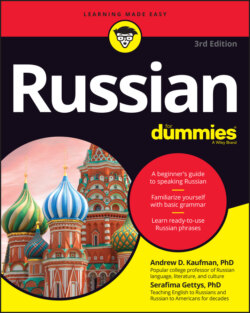Читать книгу Russian For Dummies - Serafima Gettys - Страница 29
WHO WAS THIS CYRIL GUY, ANYWAY?
ОглавлениеPicture this: The year is sometime around AD 863. Two Byzantine monks and brothers, Cyril and Methodius, were commissioned by their emperor to Christianize the East European pagan tribes. To carry out the emperor’s order, the two brothers had to transcribe the Bible into Slavic. This task was very daunting because the Slavs didn’t have any written language at the time, and the Slavic dialect they were working with contained a lot of bizarre sounds not found in any other language. The brothers’ solution was to create an alphabet based on the Greek alphabet and certain old Latin words and sounds (which explains why some Cyrillic letters look and sound similar to Latin, which is the language much of English is based on). In other words, the Cyrillic alphabet, which was named after Cyril, is a mishmash of Greek and Latin spiced with a couple of Hebrew letters for good measure. The result was an alphabet that contains practically every sound necessary for the correct pronunciation of Russian. Cyrillic script is now used by more than 70 languages, ranging from Eastern Europe’s Slavic languages (Russian, Ukrainian, Belarusian, Bulgarian, Serbian, and Macedonian) to Central Asia’s Altaic languages (Turkmen, Uzbek, Kazakh, and Kirghiz). Truth be told, however, after the collapse of the Soviet Union these former Soviet republics have been moving away from a Cyrillic-based alphabet toward a Latin-based one. Most people in these areas, especially those of the older generation who lived under the Soviet regime, speak and write Russian fluently.
